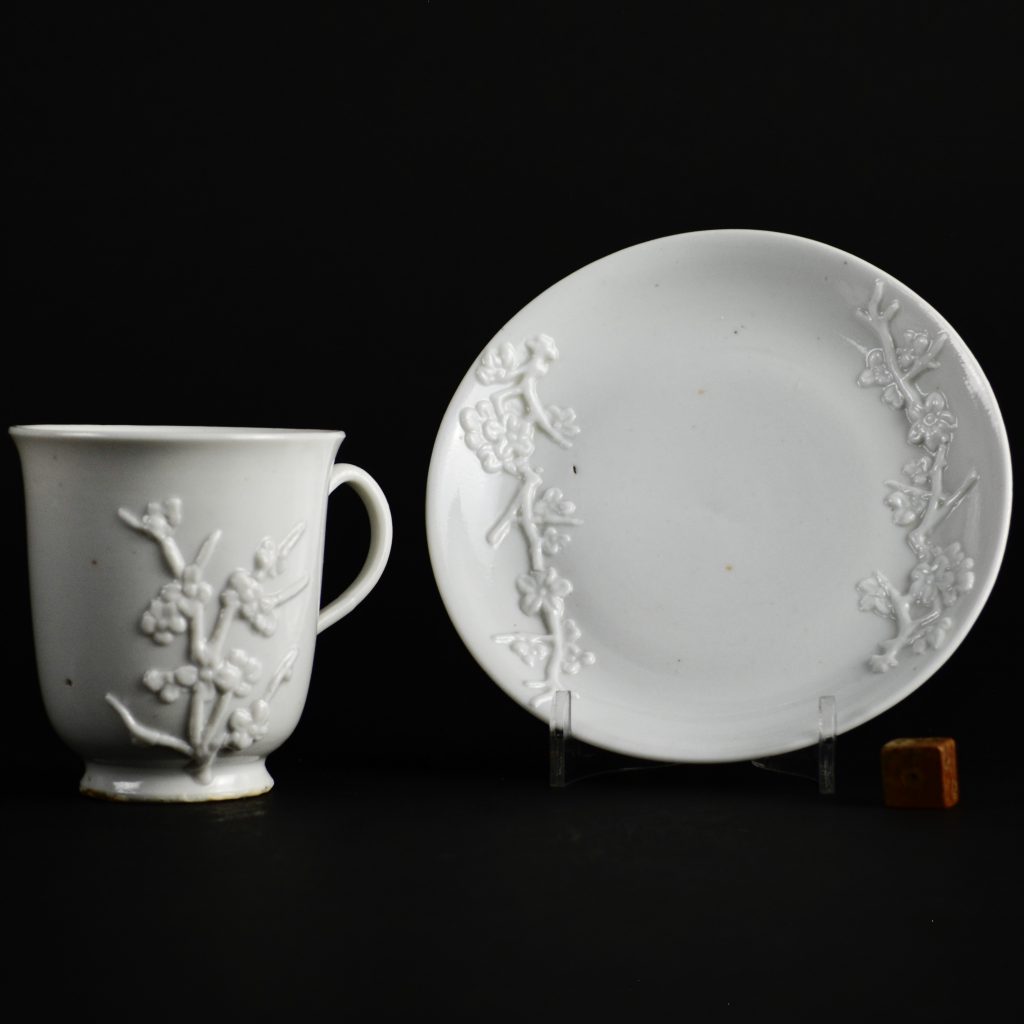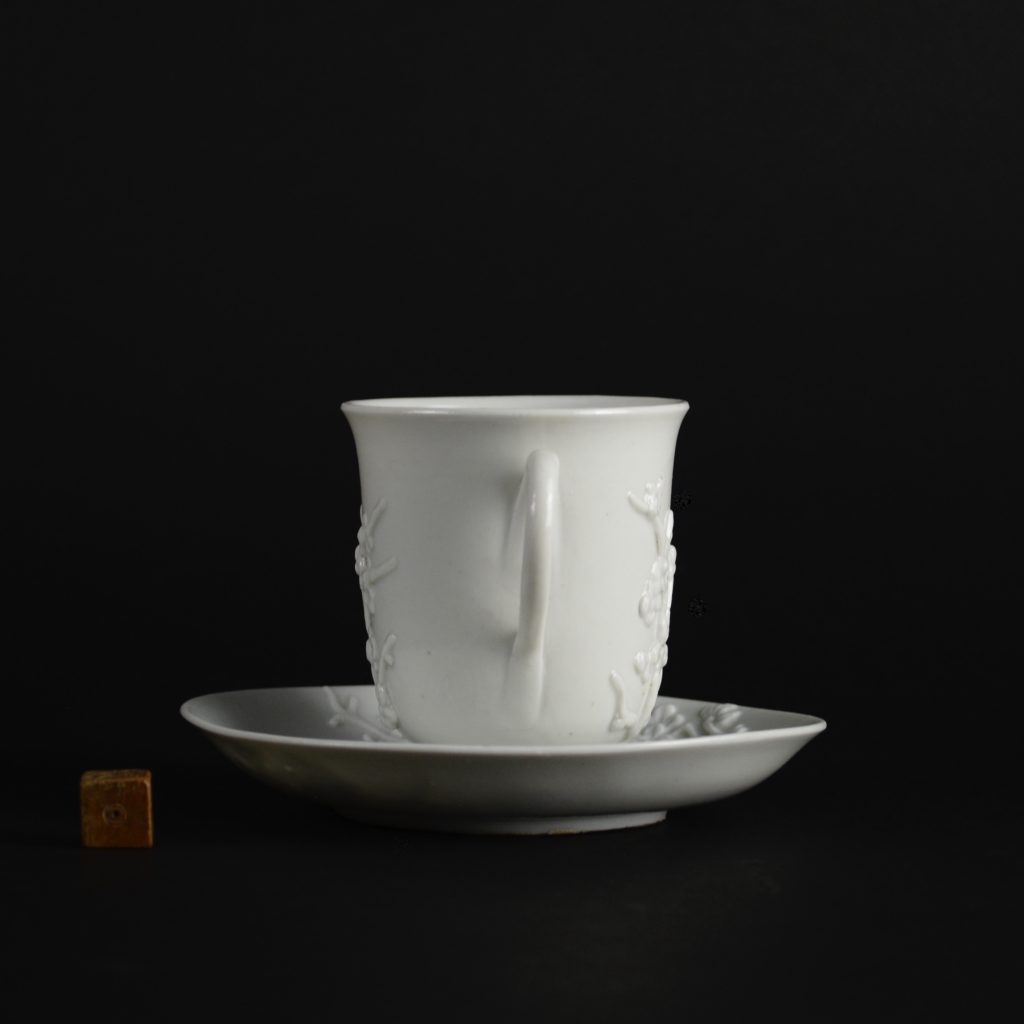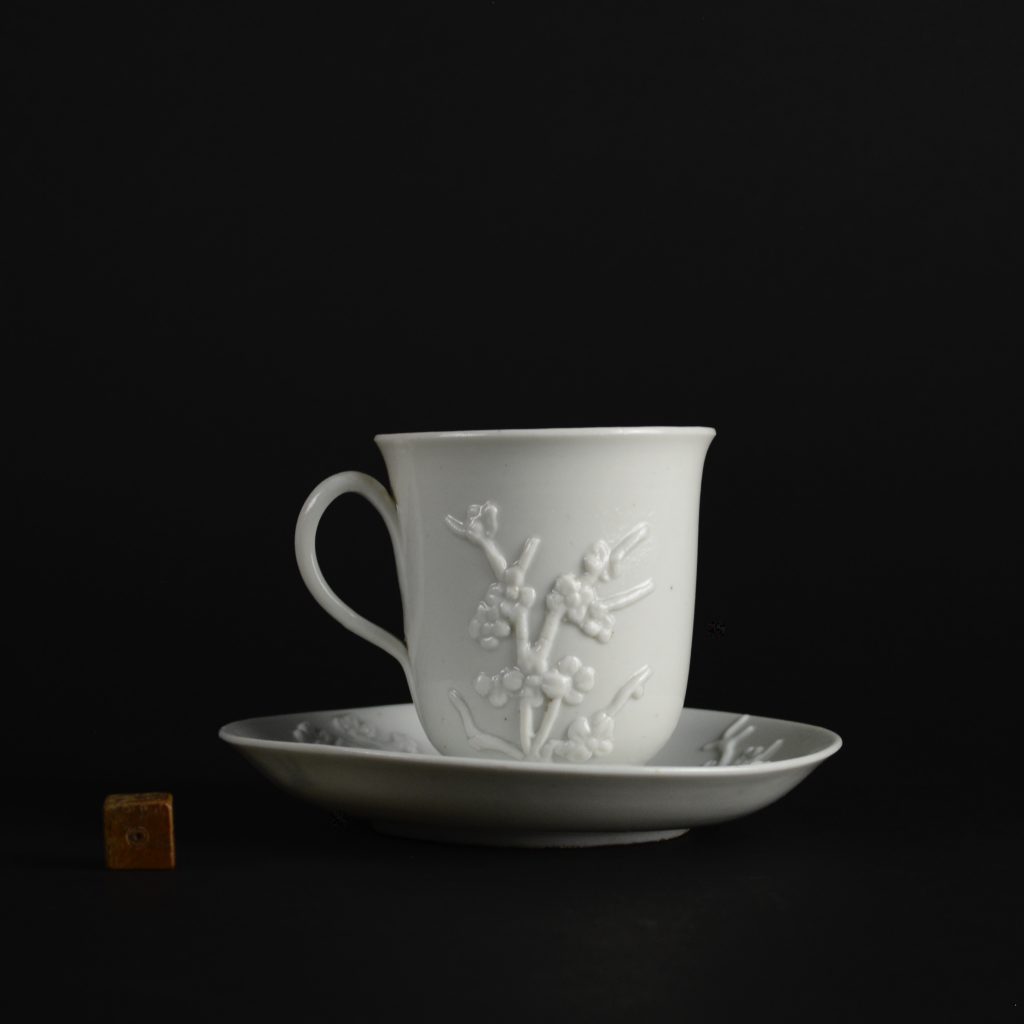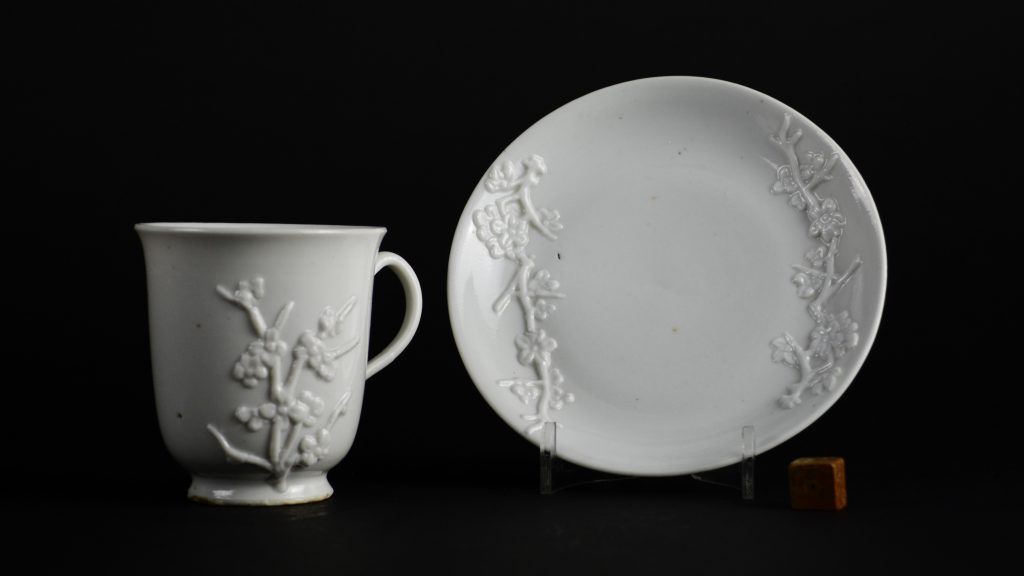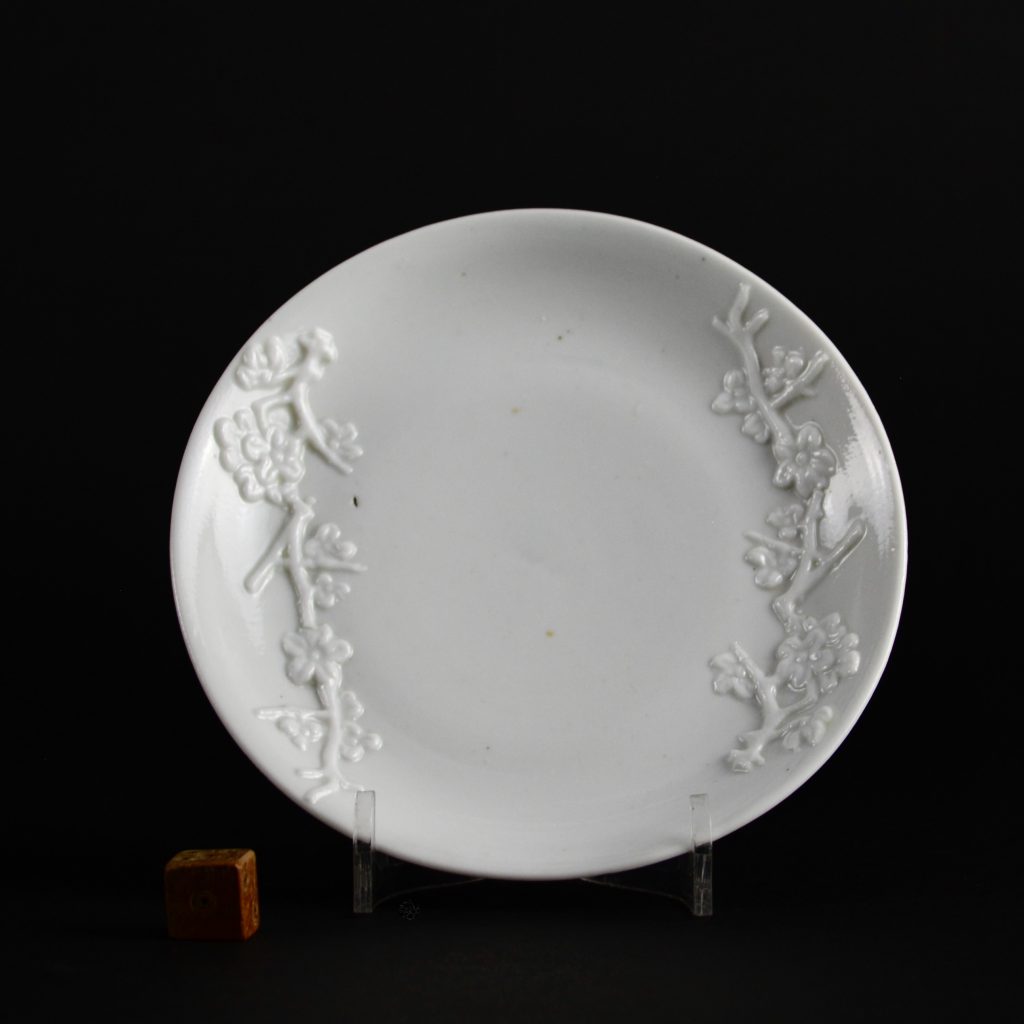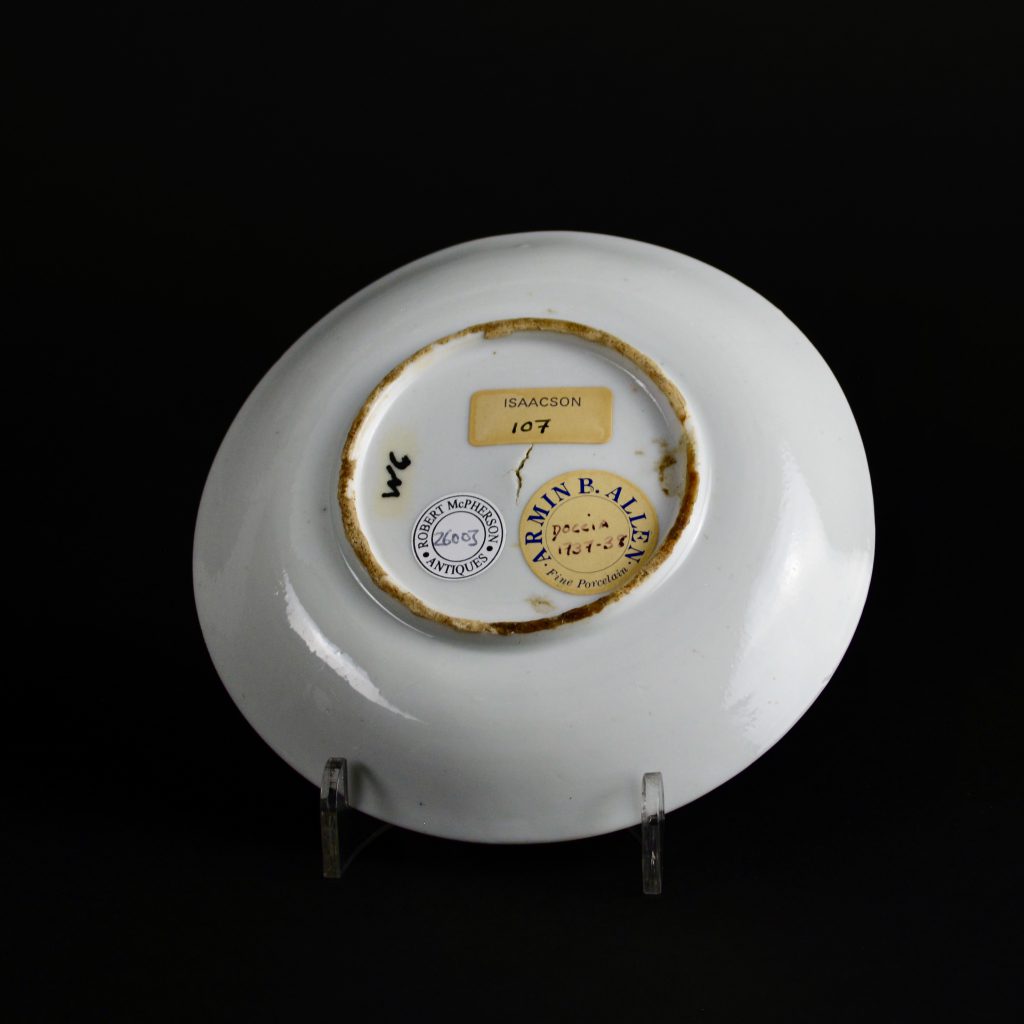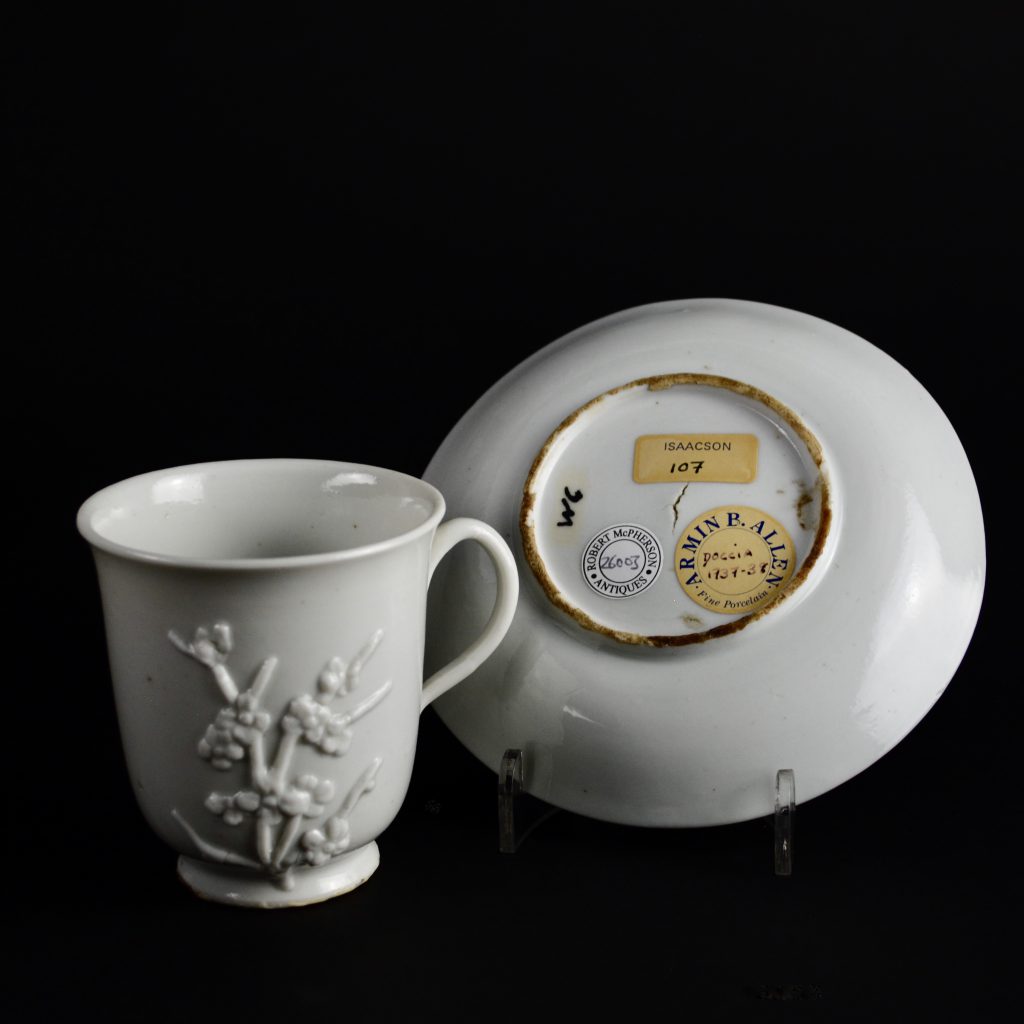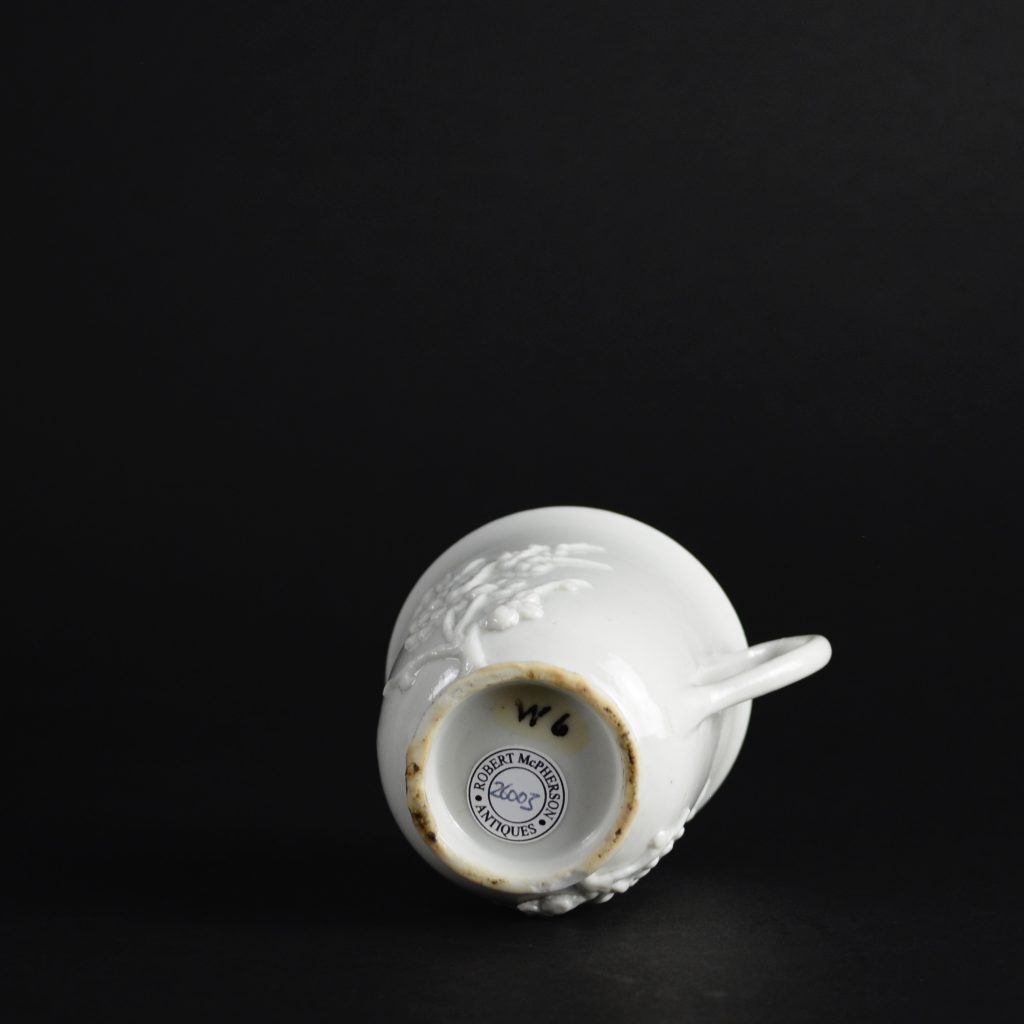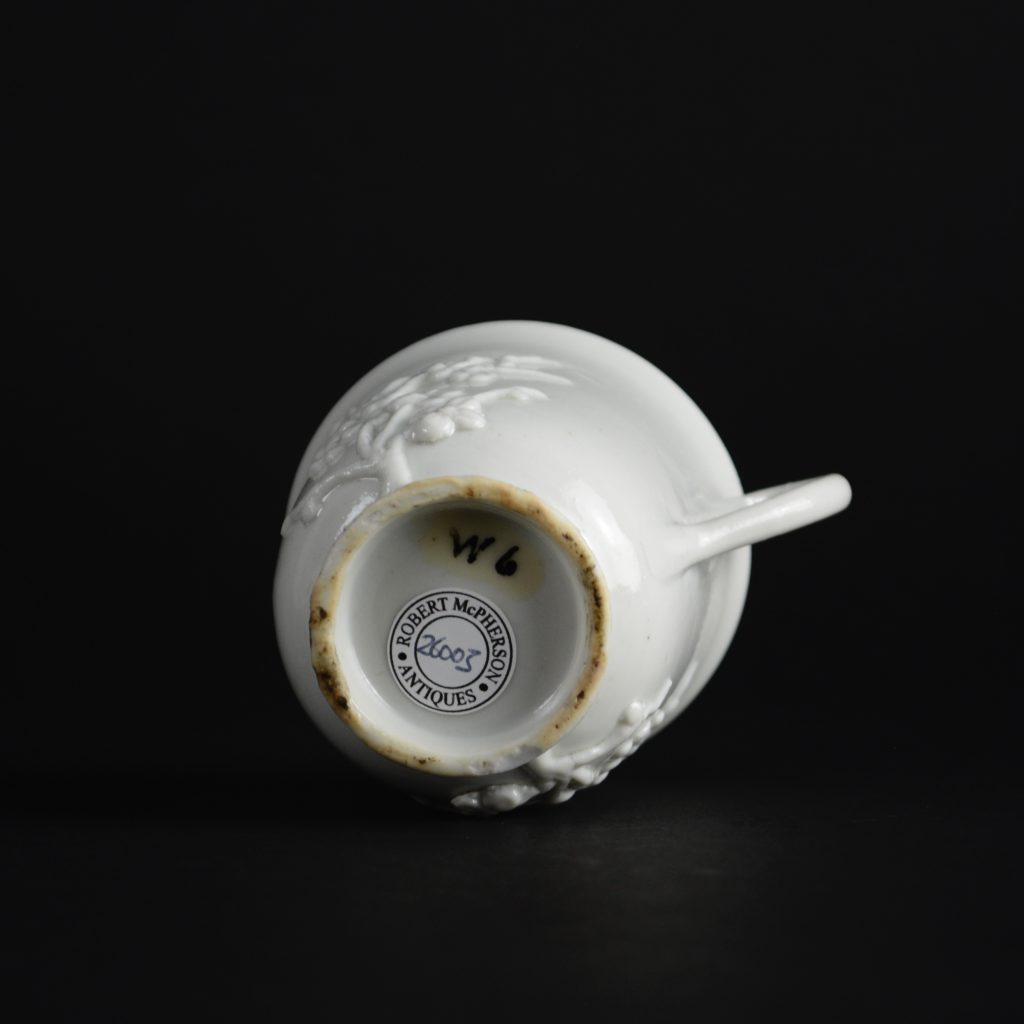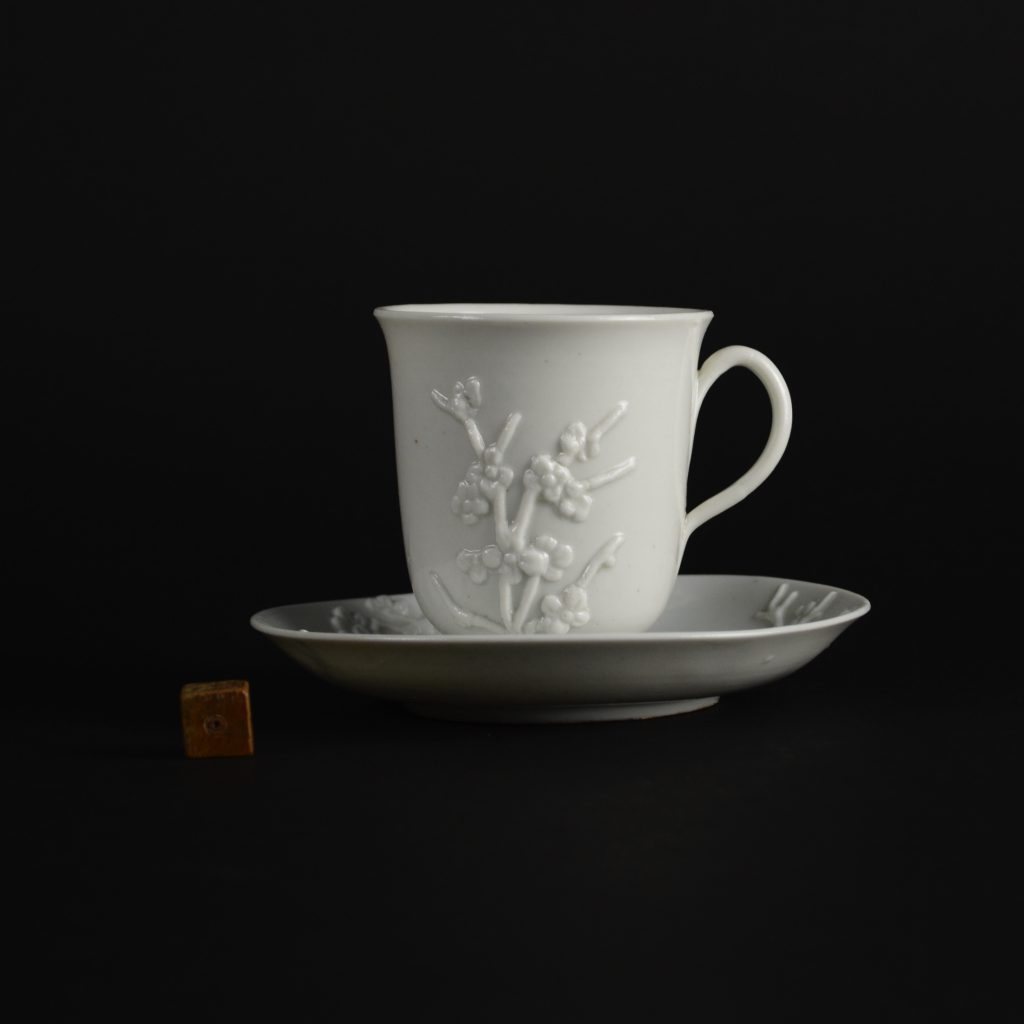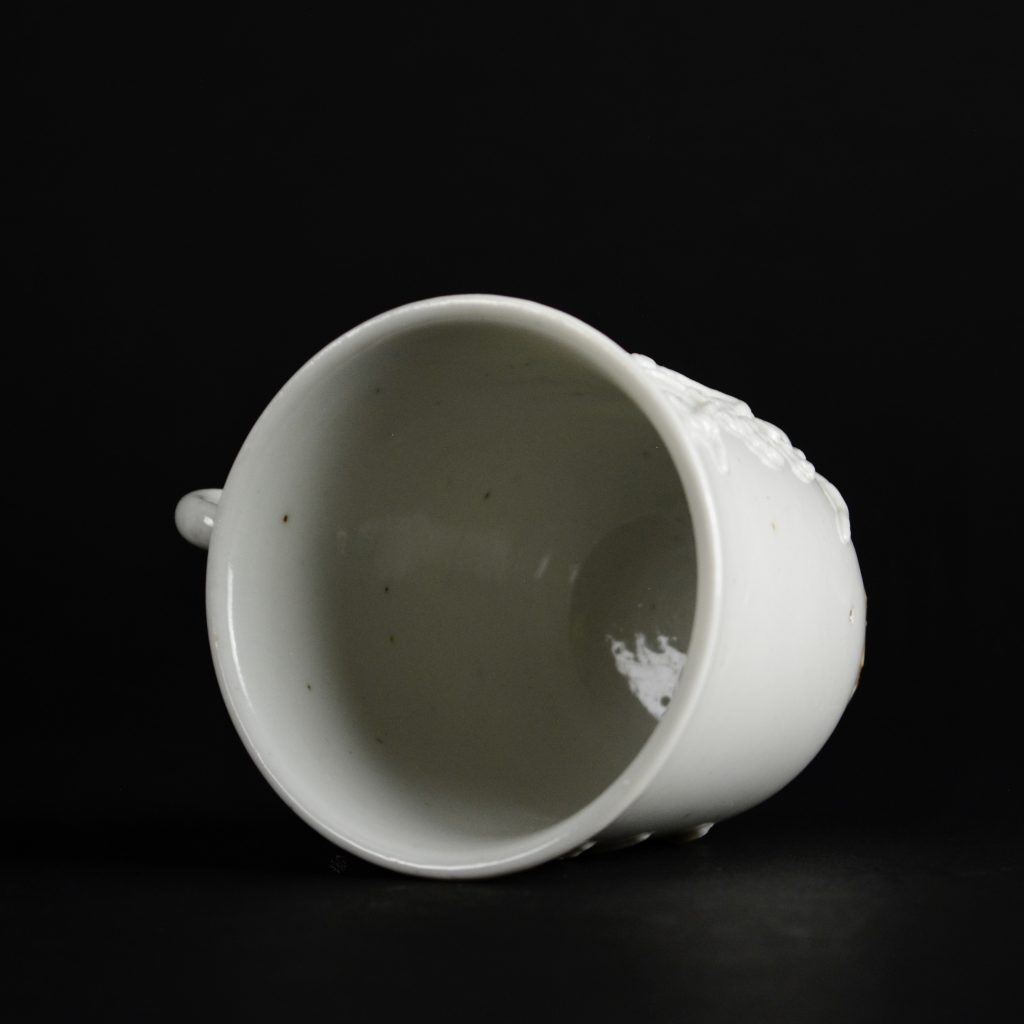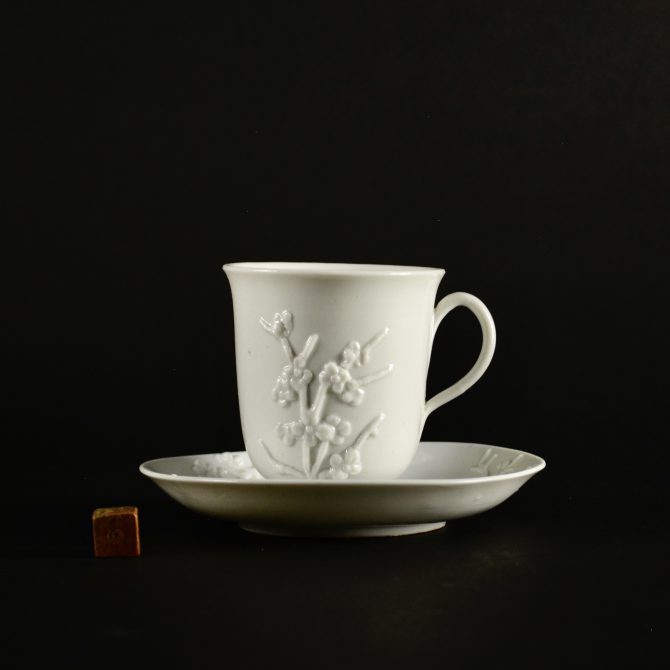
An 18th Century Doccia Blanc de Chine Style Coffee Cup and Saucer
An 18th Century Doccia Blanc de Chine Style Coffee Cup and Saucer c.1745 – 1750. The tall cup and shallow saucer are decorated with prunus sprigs applied to the surface. Imitations of Chinese Blanc de Chine porcelain were very popular in Europe during the mid-18th century.
SALE PENDING
- Condition
- In perfect condition. The base of the saucer has a firing crack.
- Size
- Diameter of the saucer 12.c cm (5 inches).
- Provenance
- The Henry C. And Martha L. Isaacson Collection English, French, and Italian Porcelain 'Isaacson 107' (label to base) and Armin B. Allen Fine Porcelain (label on the base dating this cup and saucer very specifically to 1737-1738). The Isaacsons were connected with Armin B. Allen because he was the author the catalogue of their collection - 'The Henry C. And Martha L. Isaacson Collection English, French, and Italian Porcelain. Paperback' – 1989 by Armin B. Allen.
- Stock number
- 26003
- References
- For a very similar Doccia Blanc de Chine style coffee cup dated to c.1745-1750 see : Lucca e le Porcellane Della Manifattura Ginori (Fondazione Centro Studi Sull`arte Licia E Carlo Ludovico Ragghainti,2001) plate 6 page 79.
Information
A Chinese Blanc de Chine Cup Adapted for use in Europe.
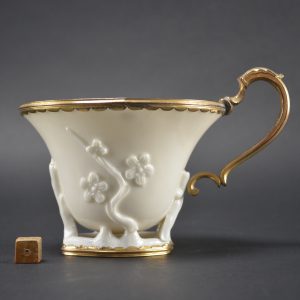
Doccia Porcelain :
The Doccia Porcelain factory was located at Doccia near Florence, it was started by Marchese Carlo Ginori (1702–1757), who was a gifted and enlightened politician. He reclaimed the marshes of cecina on the Tuscan coast for use in agriculture and even introduced goldfish from China to the Austrian court. But his great passion was for porcelain, his factory at Doccia started in 1735, although the early period was experimental. Commercial production didn`t start until the early 1740`s, the factory is still in production today. Carlo Ginori shared Augustus the Strong`s love of large sculptural ceramics, wonderful large white porcelain figures and groups were produced, but the factory`s main output was functional porcelain, tea and coffee services as well as dinner services, fork and knife handles, vases, bottle coolers and many other objects. The Doccia factory sometimes used a hybrid hard-paste, the so-called masso bastardo. The paste is somewhat grey, frequently showing `firing cracks`. The lead-glaze that was used in the 18th century is also rather grey, sometimes this greyness can be quite pronounced, the tin-oxide glaze can sometimes have an orange-peel effect caused but tiny burst bubbles, this gives a slightly dull appearance. Towards the later part of the 18th century a fine cold white paste was developed for finer quality pieces. The Doccia factory is especially important for the introduced a new technique called Stampino in the 1740`s, this is the earliest attempt at mechanical decoration on European porcelain, the technique involves a type of stencilling in blue and white.
Plum Blossom / Meihua :
Plum (Prunus), Meihua, is one of the most important plants in Chinese art. Their flowers grow on knurled old angular branches, the flowers are fragile and pure, so they can be a symbol of vigour in old age as well as purity. The tree is the first to flower after the long hard winter, symbolically it can represent perseverance as well as renewal. This meaning is enhanced by a background of cracked-ice, the design can be seen as representing the end of winter and the beginning of spring with the ice of winter cracking to reveal a new year dawning. Branches of plum blossom convey the `Five Blessings` Meikai wufu, longevity, wealth, health, love of virtue and a peaceful death. The number five, an auspicious number to the Chinese, is taken from the five petals of the plum flower.
Blanc de Chine Porcelain :
The porcelain known in the West as Blanc de Chine was produced 300 miles south of the main Chinese kiln complex of Jingdezhen. The term refers to the fine grain white porcelain made at the kilns situated near Dehua in the coastal province of Fujian, these kilns also produced other types of porcelain. A rather freely painted blue and white ware, porcelain with brightly coloured `Swatow` type enamels as well as pieces with a brown iron-rich glaze. However it is the white blanc de Chine wares that have made these kilns famous. The quality and colour achieved by the Dehua potters was partly due to the local porcelain stone, it was unusually pure and was used without kaolin being added. This, combined with a low iron content and other chemical factors within the body as well as the glaze, enabled the potters to produce superb ivory-white porcelain.
